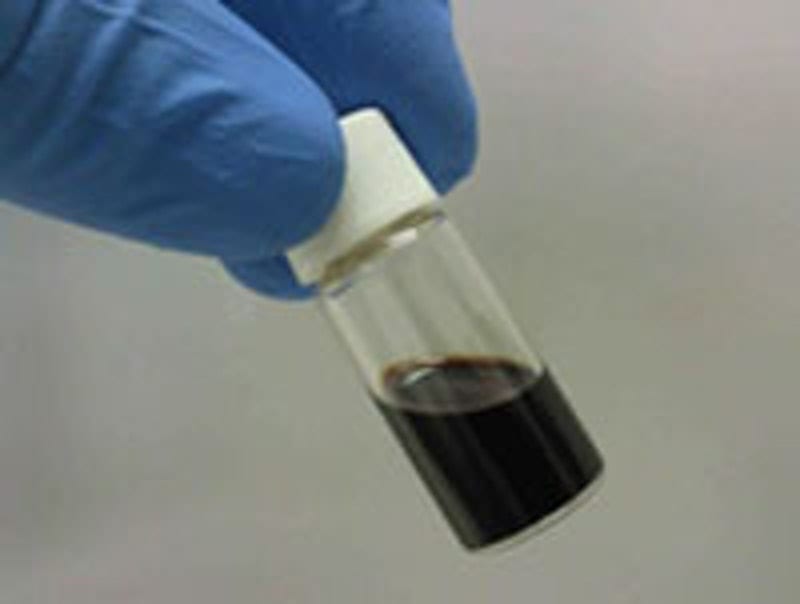
Despite barriers of blood, brain and bureaucracy, intranasal insulin may emerge as a promising treatment for pathological memory loss
The newest chemical under investigation for managing Alzheimer’s disease (AD) is actually not new at all. Insulin, the therapeutic hormone all-too familiar to individuals with diabetes, has been around for decades. In fact December will mark 90 years since its discoverers earned the Nobel Prize in Physiology or Medicine for the extraction of insulin for clinical use. Yet to say that insulin has been under our noses all these years wouldn’t exactly be correct. Because if it had been under our noses, we might have sensed its neurologic benefits sooner.
The latest insulin therapy is not delivered via injection like its diabetes-treating counterparts, nor does it come in the form of a pill or a patch like the cholinesterase inhibitors often prescribed to patients with AD. Instead this novel therapeutic enters the body through the nose—the only entry point that gives insulin a chance of reaching the brain.
A large peptide molecule, insulin from the blood cannot float easily into the brain because the blood brain barrier (BBB), a sort of neuroprotective moat, prevents its transport. Fortified by cellular guards called tight junctions, the BBB rejects many pharmacologic hopefuls, allowing entrance only to certain types of substances. Namely small or lipophilic molecules can be administered orally (or via injection, or through the skin) and as long as the relevant chemicals end up in the blood stream, they can casually saunter across the BBB and act on the brain. Large and cumbersome, insulin does not have this luxury and must therefore take a more creative route across the moat.
The nose, conspicuous and sometimes even goofy, provides that creative route. Yet it’s a route that, for many years, researchers were hesitant to take.
“They would say things like, ‘Well, why would there be a blood brain barrier if all you had to do was put something in the nose and it would go to the brain?’” says William H. Frey II, Ph.D., Research Director at HealthPartners Center for Memory & Aging. As of 1989 Frey had been “in the Alzheimer’s deal” for over a decade. At that time he was conducting clinical trials of a neurotrophic factor (a therapeutic protein) to treat AD and, because of the seeming insurmountability of the BBB, the work had been less than fruitful. “It became clear to me that, once again, this neurotrophic factor was not getting effectively into the brain,” he says. So Frey decided to sleep on it. “I went to sleep and I had a dream. And this is how I discovered the intranasal method of getting around the blood brain barrier,” he says. “It had been known since the early 1900s that a number of different viruses that got into the nose would travel up the olfactory nerves and the trigeminal nerves—both of these are nerves that go directly from the nasal mucosa right into the brain. The idea that came to me in this dream in 1989 was: if bad things can do it, why can’t good things do it?”
When Frey revisited the idea upon waking, it registered as simultaneously intuitive and absurd—a logical fantasy like so many dreams.
The Latest Bing News on:
Intranasal insulin
- Rare genetic condition may offer protection from heart diseaseon April 30, 2024 at 3:56 pm
A rare genetic condition, known as growth hormone receptor deficiency (GHRD) or Laron syndrome, may protect against cardiovascular disease.
- Amphastar Pharmaceuticals to Release First Quarter…on April 30, 2024 at 1:10 pm
RANCHO CUCAMONGA, CA / ACCESSWIRE / April 30, 2024 / Amphastar Pharmaceuticals, Inc. (NASDAQ:AMPH) announced that the Company will release results for its first quarter of 2024 ended March 31, 2024, ...
- CA will buy cheaper naloxone to stop fentanyl deathson April 30, 2024 at 6:00 am
Ibarra: California can buy more overdose-reversing medication at a lower price under a deal Gov. Gavin Newsom’s office announced Monday with a pharmaceutical company, potentially giving law ...
- California to sell state-branded Narcan generic to cut costson April 30, 2024 at 2:12 am
Twin packs of the product costing $24 will be distributed under the CalRx brand for free to qualifying organisations, like first responders, universities, and community organisations, and will be sold ...
- California partners with New Jersey company to make generic Narcan overdose reversal drugon April 30, 2024 at 12:33 am
The naloxone nasal spray will be the first drug to carry the CalRx label ... Last year, California signed a 10-year agreement with the nonprofit Civica to produce CalRx branded insulin, which is used ...
- California strikes deal for cheaper overdose-reversing medicationon April 29, 2024 at 10:02 pm
That discount on state-funded naloxone does not necessarily translate to lower prices at the drug-store for everyday shoppers, where naloxone usually costs around $45 per pack of two doses.
- California gets opioid-reversal drug at big discounton April 29, 2024 at 3:00 pm
Officials said California Naloxone Distribution Project has distributed more than 4.1 million naloxone kits, which has led to 260,000 reported overdose reversals. The increase in availability is ...
- California Secures Deal to Halve the Price of Life-Saving Naloxone, Expanding Accessibility in Opioid Battleon April 29, 2024 at 12:27 pm
California plans to purchase CalRx OTC naloxone for $24, nearly half the market price, to combat opioid overdoses.
- California is joining with a New Jersey company to buy a generic opioid overdose reversal drugon April 29, 2024 at 7:32 am
California is partnering with a New Jersey-based pharmaceutical company to purchase a generic version of Narcan, the most well-known version of naloxone that can save a person's life during an opioid ...
- Health Benefits of Elderflower (Sambucus nigra)on April 25, 2024 at 3:00 am
Elderflower (and elderberry) is in many food and medicinal products. Possible benefits include helping constipation, cold symptoms, and blood sugar.
The Latest Google Headlines on:
Intranasal insulin
[google_news title=”” keyword=”Intranasal insulin” num_posts=”10″ blurb_length=”0″ show_thumb=”left”]
The Latest Bing News on:
Alzheimer’s
- Memories in the Making event raises funds for Alzheimer’son April 29, 2024 at 7:28 am
The Alzheimer’s Association is holding a unique art auction/fundraiser on Friday. The group’s annual Memories in the Making event is Friday, May 3 from 5:30 – 10 p.m. at the Vibrant Arena at the Mark,
- Neuroscientists Warn of 'Cascading' Alzheimer's Risk From These Two Habitson April 27, 2024 at 6:59 am
The habits produce a "synergistic effect" on our risk of developing Alzheimer's Disease and general cognitive decline.
The Latest Google Headlines on:
Alzheimer’s
[google_news title=”” keyword=”Alzheimer’s” num_posts=”10″ blurb_length=”0″ show_thumb=”left”]










